Invited Session-1
Session Chair: Zaichen Zhang
Date: Monday, 23 October, 2017
Time: 11:00-12:30
Room: Wanxiang Hall (2F)-F meeting room
Title:
Data-Driven Sub-Nyquist Spectrum Sensing for IoT Systems
Instructor:
Yue Gao, Queen Mary University of London, UK (yue.gao@qmul.ac.uk)
Spectrum sensing is the first step to realize dynamic spectrum sharing. Geo-location database can enable white space devices (WSDs) to make use of the vacant spectrum without harmfully interfering with incumbent services. Dynamic changes of the wireless environment pose significant challenges to the database approach. Wideband spectrum sensing can detect the instant spectral opportunities over the wide frequency range, but the high sampling rate is hard to implement in the power-limited devices. To relax the sensing requirements on the WSDs, hybrid framework that combines the advantages of both geo-location database and spectrum sensing is explored in this talk. To further reduce the sampling bottleneck at high frequency, sub-Nyquist sampling techniques are adopted by exploiting the sparse property of the wideband signals for Internet of Things (IoT) systems. The experimental results show that the proposed hybrid schemes can achieve improved detection performance with reduced hardware and computation complexity in comparison with the sensing and database only approach. Furthermore, we investigate the spectrum utilisation of TV white space (TVWS) at different locations in London. Both large-scale and long-term outdoor measurement are conducted to better understand the features and variations in multiple locations and time periods. Different from most fixed location only measurements, we also drive along the main streets of London with a portable node measuring on-route spectrum density with corresponding geographical information. In order to better understand the dynamic spectrum utilisation features.
Biography of the instructor:

Yue Gao, Queen Mary University of London, UK
Dr Yue Gao is a Reader in Antennas and Signal Processing and Director of Whitespace Machine Communication Lab in the School of Electronic Engineering and Computer Science at Queen Mary University of London (QMUL) in the UK. He worked as Research Assistant, Lecturer and Senior Lecturer at QMUL since 2007. He received his Bachelor degree from Beijing University of Posts and Telecommunications in China in 2002, and his MSc and PhD degrees from QMUL in 2003 and 2007, respectively. He is currently leading a team developing theoretical research into practice in the interdisciplinary area among smart antennas, signal processing, spectrum sharing and internet of things (IoT) applications. He has published over 120 peer-reviewed journal and conference papers, 2 patents, and 2 book chapters. He is a co-recipient of the EU Horizon Prize Award on Collaborative Spectrum Sharing in 2016, and Research Performance Award from Faulty of Science and Engineering at QMUL in 2017.
He is an Editor for the IEEE Transactions on Vehicular Technology, IEEE Wireless Communication Letter and China Communications. He is serving as Cognitive Radio Symposium Co-Chair of the IEEE GLOBECOM 2017. He has served as the Signal Processing for Communications Symposium Co-Chair for IEEE ICCC 2016, Publicity Co-Chair for IEEE GLOBECOM 2016, and General Chair of the IEEE WoWMoM and iWEM 2017. He is a Senior Member of IEEE, a Secretary of the IEEE Technical Committee on Cognitive Networks, and an IEEE Vehicular Technology Society Distinguished Lecturer.
Title:
Randomized Gaussian Message Passing for Scalable PHY Layer of C-RAN
Instructor:
Yingjun Zhang (Angela), The Chinese University of Hong Kong, Hong Kong, China (yjzhang@ie.cuhk.edu.hk)
With centralized processing, cooperative radio, real-time cloud computing, and clean infrastructure, Cloud Radio Access Network (CRAN) is a “future proof” solution to sustain the mobile data explosion in future wireless networks. The technology holds great potential in enhancing future wireless systems with necessary capability to accommodate unprecedented traffic demand. However, cloud wireless systems inevitably encounter scalability issues in terms of computational and implementation complexities. This talk discusses the challenges and recent developments in technologies that potentially address the scalability issues of CRANs. In particular, I will focus on a randomized Gaussian message passing algorithm to achieve perfect scalability and convergence in the PHY layer of CRANs.
Biography of the instructor:

Yingjun Zhang (Angela), The Chinese University of Hong Kong, Hong Kong, China
Angela Yingjun Zhang received her PhD degree in Electrical and Electronic Engineering from the Hong Kong University of Science and Technology, Hong Kong in 2004. Since 2005, she has been with Department of Information Engineering, The Chinese University of Hong Kong, where she is currently an Associate Professor. Her research interests include mainly wireless communications systems and smart power systems, in particular optimization techniques for such systems.
She is an Executive Editor of the IEEE Transactions on Wireless Communications. She is also an Associate Editor of the IEEE Transactions on Communications. Previously, she served many years as an Associate Editor of the IEEE Transactions on Wireless Communications, Security and Communications Networks (Wiley), and a Feature Topic in the IEEE Communications Magazine. She has served as a Workshop Chair of IEEE ICCC 2017, 2014 and 2013, TPC Vice Chair of Wireless Networks and Security Track of IEEE VTC 2014, TPC Vice-Chair of Wireless Communications Track of IEEE CCNC 2013, TPC Co-Chair of Wireless Communications Symposium of the IEEE GLOBECOM 2012, Publication Chair of the IEEE TTM 2011, TPC Co-Chair of Communication Theory Symposium of the IEEE ICC 2009, Track Chair of ICCCN 2007, and Publicity Chair of the IEEE MASS 2007. She was a Co-Chair of the IEEE ComSoc Multimedia Communications Technical Committee and the IEEE Communication Society GOLD Coordinator.
She was the co-recipient of the 2014 IEEE ComSoc APB Outstanding Paper Award, the 2013 IEEE SmartgridComm Best Paper Award, and the 2011 IEEE Marconi Prize Paper Award on Wireless Communications. She was the recipient of the Young Researcher Award from the Chinese University of Hong Kong in 2011. As the only winner from engineering science, she has won the Hong Kong Young Scientist Award 2006, conferred by the Hong Kong Institution of Science. Dr. Zhang is a Fellow of IET.
Title:
Scatterer Modeling for Wireless Channel @ mmWave
Instructor:
Bo Ai, Beijing Jiaotong University, China (boai@bjtu.edu.cn)
Mmwave communication has been regarded as one of key technology in 5G. FCC has allocated 28 GHz, 37/39 GHz and 64-71 GHz frequencies as licensed or unlicensed bands for 5G mobile radio services (MRS) . As is known, the sensitivity of mmWave links to blockage is due to their weak diffraction characteristics and the scatterers in real physical scenarios are usually neglected. In this talk, we will make an analysis of scatterer modeling for wireless channel at mmWave, which is of great importance to the precise modeling for wireless channels.
Biography of the instructor:
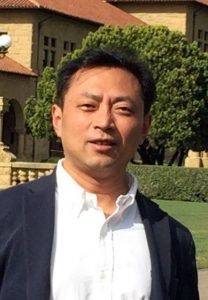
Bo Ai, Beijing Jiaotong University, China
Prof. Ai Bo is now working as a full Professor and Ph.D. supervisor at Beijing Jiaotong University, where he is a deputy director of State Key Lab. of Rail Traffic Control and Safety, and a deputy director of International Joint Research Center of MOST. He is one of the main responsible people for Beijing “Urban rail operation control system” International Science and Technology Cooperation Base, and the backbone member of the Innovative Engineering Based jointly granted by Chinese Ministry of Education and the State Administration of Foreign Experts Affairs. He is a member of US-Asia Innovation Gateway. He was a visiting professor at EE Department, Stanford University during March and September, 2015. During his visiting period, he has been invited by Stanford International Developing Center, UC Berkeley, University of South California, Harvard, University of Maryland, Georgia Tech. for academic presentations. He is an IEEE senior member, IET Fellow, IEEE VTS Beijing Chapter Vice Chair, and IEEE VTS Distinguished Lecturer.
He has authored 7 books and published over 300 scientific research papers in his research area. He has hold 26 invention patents. He has been the research team leader for over 30 national projects and has won some scientific research prizes such as the First Grade of Technology Advancement Award of Shaanxi Province. He is serving as an associate editor for IEEE Transactions on Consumer Electronics and an editorial member of Wireless Personal Communications. One of his papers was listed as Hot paper by WoS, and two of his papers were listed as ESI paper by WoS. His research interests include radio wave propagation and wireless channel modeling, LTE for railway and broadband wireless communication techniques.
Invited Session-2
Session Chair: Yue Gao
Date: Monday, 23 October, 2017
Time: 14:00-15:30
Room: Wanxiang Hall (2F)-F meeting room
Title:
Optical Mobile Communications
Instructor:
Zaichen Zhang, Southeast University, China (zczhang@seu.edu.cn)
Optical band is to be explored to meet requirements of future wireless communication systems. Optical wireless communication (OWC) technologies, such as free space optical (FSO) and visible light communications (VLC), have been well deployed but still have limitations to be incorporated in the future mobile communication systems. In this talk, we introduce our recent work on the newly proposed optical mobile communication (OMC) technologies. Different from FSO, OMC supports multiple senders and multiple receivers, with possible high mobility and handover among cells. Compared with VLC, OMC achieves higher throughput and supports higher mobility. OMC brings several key design problems, such as beam adaption and resource optimization across different domains, which will also be addressed in this talk.
Biography of the instructor:
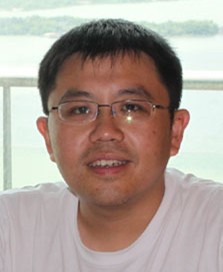
Zaichen Zhang, Southeast University, China
Zaichen Zhang was born in Nanjing, China in 1975. He received BS and MS degrees in Electrical and Information Engineering from Southeast University, Nanjing, China in 1996 and 1999, respectively, and PhD degree in Electrical and Electronic Engineering from the University of Hong Kong, Hong Kong, China in 2002. From 2002 to 2004, he was a Postdoctoral Fellow at the National Mobile Communications Research Lab. (NCRL), Southeast University. Since 2004, he has been with School of Information Science and Engineering, Southeast University, where he is a Professor and serves as Associated Dean of the School. He is a Senior Member of IEEE, a Fellow of Young Scientist Club and a Senior Member of CIE, a Member of Young Scientist Committee, CIC, and a Guest Professor of Nantong University. He has published over 150 papers and issued 26 patents. His current research interests include 5G wireless systems, optical wireless communication technologies, and quantum information transmission. He received the title of the New Century Excellent Talents of MoE, China in 2007. He received The Most Influential Paper Award from Chinese Physical Society in 2016 and the Landmark Achievement Award of NCRL in 2005. He was the Keynote Chair of IEEE ICC 2015, the Symposium Chair of IEEE ICNC 2015 and IEEE PIMRC 2015, and is also the Operations Chair of IEEE ICC 2019.
Title:
From TDD to FDD: Challenges in Massive MIMO
Instructor:
Xiliang Luo, ShanghaiTech University, China (luoxl@shanghaitech.edu.cn)
This talk will provide an overview of various technical challenges in massive MIMO deployments and the corresponding solutions. Specifically, we will first go over TDD massive MIMO systems and discuss the TDD reciprocity calibration problems and the uplink pilot contamination issues. In particular, we will show how to mitigate the UL pilot contamination through aligning the channel power in multiple domains, i.e. the time, angular, and Doppler domains. Then we discuss how to deploy massive MIMO in FDD mode. With our proposed DL pilots, we are able to effect desirable DL path aligning at each served MS for the DL CSI acquisition and feedback in FDD massive MIMO. A scalable CSI feedback scheme is designed such that FDD massive MIMO can work reasonably well with only a small amount of DL and UL overheads similar to those consumed in conventional cellular systems.
Biography of the instructor:

Xiliang Luo, ShanghaiTech University, China
Xiliang Luo received the B.Sc. degree in physics from Peking University, Beijing, China, in 2001, and the M.Sc. and Ph.D. degrees in electrical engineering from the University of Minnesota, Minneapolis, MN, USA, in 2003 and 2006, respectively.
After finishing his Ph.D. studies, he joined Qualcomm Research and carried out cutting edge research at different posts as a Senior Engineer (2006), a Staff Engineer (2010), and then a Senior Staff Engineer (2013), where he was involved in the system designs, analyses, and standardization of 4G LTE. He was the designer of various enhancements to Qualcomm’s current LTE solutions and led the designs of Qualcomm’s next generation LTE modem for heterogeneous networks from initial concept to final completion. Since 2014, he has been with the School of Information Science and Technology, ShanghaiTech University, Shanghai, China, as an Associate Professor. He has published over 50 research papers in top journals and conferences. His research interests include signal processing, communications, and information theory. In particular, he is interested in research combining information theory and signal processing theory that can shape and guide the designs of next generation data and information processing networks. He is the co-inventor of over 70 US and international patents, the majority of which have been adopted into current LTE and LTE-advanced standards.
Title:
Resource Allocation for Green Coordinated Multipoint Communication Systems
Instructor:
Xin Wang, Fudan University, China (xwang11@fudan.edu.cn)
Green coordinated transmissions play an important role in development of the next-generation energy- and spectrum-efficient cellular heterogeneous networks (HetNets). On the other hand, by fast evolution of the current power network infrastructure, it is expected that all future communication systems will be powered by a smart grid with high penetration of renewable energy sources (RES). Integration of smart-grid technologies and RES into system designs then holds the key to fully exploiting the potential of coordinated communications in future HetNets. To this end, we establish a new paradigm to develop low-complexity online (real-time) control schemes for efficient utilization of the RES and wireless communication resource. Leveraging the stochastic optimization approach, a unified framework is developed for modeling, analyzing, and designing efficient, robust, distributed, two-timescale online resource management schemes in smart-grid powered coordinated multipoint communication systems. It is shown – both theoretically and empirically- that the proposed algorithms and schemes can significantly improve the energy efficiency of the coordinated communication systems in practical stochastic and dynamic network environments.
Biography of the instructor:
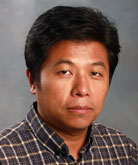
Xin Wang, Fudan University, China
Xin Wang received the B.Sc. and M.Sc. degrees from Fudan University, Shanghai, China, in 1997 and 2000, respectively, and the Ph.D. degree from Auburn University, Auburn, AL, USA, in 2004, all in electrical engineering. From 2004 to 2006, he was a Postdoctoral Research Associate with the Department of Electrical and Computer Engineering, University of Minnesota, Minneapolis. In 2006, he joined the Department of Computer and Electrical Engineering and Computer Science, Florida Atlantic University, Boca Raton, FL, USA, as an Assistant Professor, and then an Associate Professor from August 2010. He is currently a Distinguished Professor with the Department of Communication Science and Engineering, Fudan University. He has served as an Associate Editor for the IEEE Transactions on Signal Processing, the IEEE Transactions on Vehicular Technology, and the IEEE Signal Processing Letters. His research interests include stochastic network optimization, energy-efficient communications, cross-layer design, and signal processing for communications.
Invited Session-3
Session Chair: Zhi Quan
Date: Monday, 23 October, 2017
Time: 16:00-17:30
Room: Wanxiang Hall (2F)-F meeting room
Title:
Physical-Layer Security for Spectrum Sharing Systems
Instructor:
Yulong Zou, Nanjing University of Posts and Telecommunications, China (yulong.zou@njupt.edu.cn)
This talk examines the physical-layer security for a spectrum sharing system consisting of multiple source-destination pairs, which dynamically access their shared spectrum for data transmissions in the presence of an eavesdropper. A source cooperation (SC) aided opportunistic jamming framework is proposed for protecting the transmission confidentiality of the spectrum sharing system against eavesdropping. Specifically, when a source node is allowed to access the shared spectrum for data transmissions, another source is opportunistically selected in the spectrum sharing system to transmit an artificial noise for disrupting the eavesdropper without affecting the legitimate transmissions. Two specific SC aided opportunistic jamming schemes are presented, namely the SC aided random jammer selection (RJS) and optimal jammer selection (OJS), which are referred to as the SC-RJS and SC-OJS, respectively. The conventional non-cooperation is considered as a baseline. Closed-form intercept probability expressions for the non-cooperation, SC-RJS and SC-OJS schemes are derived, based on which their secrecy diversity gains are determined through an asymptotic intercept probability analysis in the high signal-to-noise ratio (SNR) region. It is proved that the conventional non-cooperation exhibits a secrecy diversity of zero, whereas the proposed SC-RJS and SC-OJS achieve a higher secrecy diversity of one. This also surprisingly means that no additional secrecy diversity gain is achieved by the optimal jammer selection compared to the random selection strategy. In addition, numerical results show that the intercept probability performance of the SC-OJS is always better than that of the SC-RJS and non-cooperation, even when the legitimate channel is worse than the eavesdropping channel.
Biography of the instructor:

Yulong Zou, Nanjing University of Posts and Telecommunications, China
Yulong Zou is a Professor at the Nanjing University of Posts and Telecommunications (NUPT), Nanjing, China. He received the B.Eng. degree in information engineering from NUPT, Nanjing, China, in July 2006, the first Ph.D. degree in electrical engineering from the Stevens Institute of Technology, New Jersey, USA, in May 2012, and the second Ph.D. degree in signal and information processing from NUPT, Nanjing, China, in July 2012. His research interests span a wide range of topics in wireless communications and signal processing, including the cooperative communications, cognitive radio, wireless security, and energy-efficient communications. Dr. Zou was awarded the 9th IEEE Communications Society Asia-Pacific Best Young Researcher in 2014. He has served as an editor for the IEEE Communications Surveys & Tutorials, IEEE Communications Letters, IET Communications, and China Communications. In addition, he has acted as TPC members for various IEEE sponsored conferences, e.g., IEEE ICC/GLOBECOM/WCNC/VTC/ICCC, etc.
Title:
Making Sense out of IoT Non-Sense
Instructor:
Winston Seah, Victoria University of Wellington, New Zealand (Winston.Seah@ecs.vuw.ac.nz)
The Internet has transformed from its original form that connects computers utilized by humans to one that connects objects, sensors, and any foreseeable device in everyday life, giving rise to the “Internet of Things”. Coined by Kevin Ashton in 1999, the term “Internet of Things” (IoT) refers to this new Internet where devices generate data and communicate, interacting often without any human intervention. Industry and academia alike have exploited IoT in marketing and securing grants respectively, purporting numerous new futuristic IoT products and research as far-fetched as IoT storytelling!!! This talk aims to put some context into the different definitions of IoT, the research challenges, and hopefully make some sense out of IoT “non-sense”.
Biography of the instructor:
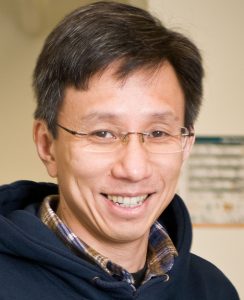
Winston Seah, Victoria University of Wellington, New Zealand
Winston K.G. Seah received the Dr.Eng. degree from Kyoto University, Kyoto, Japan, in 1997. He is currently Professor of Network Engineering in the School of Engineering and Computer Science, Victoria University of Wellington, New Zealand. Prior to this, he has worked for more than 16 years in mission-oriented industrial research, taking ideas from theory to prototypes, most recently, as a Senior Scientist (Networking Protocols) in the Institute for Infocomm Research (I2R), Singapore. He is actively involved in research in the areas of mobile ad hoc and sensor networks, and co-developed one of the first Quality of Service (QoS) models for mobile ad hoc networks. His latest research is focused on networking protocols to address the needs of 5G networks, the Internet of Things and other machine-type communications (MTC) technologies, encompassing both long-range communications (LTE-A, Narrowband IoT) as well as, short range technologies (IEEE802.15.4, 6LoWPAN, RPL, etc.) He is a Senior Member of the IEEE and Professional Member of the ACM. His detailed CV is available at http://www.ecs.vuw.ac.nz/~winston/.
Title:
Enabling Techniques for Radio Access in Ultra-Dense Wireless Networks
Instructor:
Lie-Liang Yang, University of Southampton, UK (lly@ecs.soton.ac.uk)
Future global 5G (5G+) wireless systems are expected to constitute an ultra-dense wireless network that aims at providing wide-ranging and ubiquitous services for every mobile user and IoT device associated with the network. Explicitly, radio access in such a network faces a lot of technical challenges. Hence, in this talk, we first address the main challenges of radio access in ultra-dense wireless networks, both uplink and downlink scenarios will be considered. Then, we explore a range of technical solutions enabling ultra-dense users/devices to share the limited radio resources available to the network. The advantages, disadvantages and the challenges for practical implementation of these optional techniques will be emphasised. We conclude the talk by discussing the further challenges and the open problems for research and development.
Biography of the instructor:
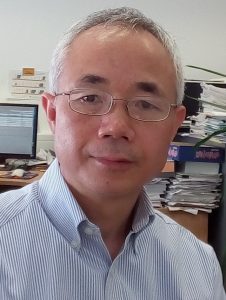
Lie-Liang Yang, University of Southampton, UK
Lie-Liang Yang received his PhD degree in communications and electronics from Northern (Beijing) Jiaotong University, Beijing, China in 1997. Since December 1997, he has been with the School of Electronics and Computer Science at the University of Southampton, United Kingdom, where he is the professor of wireless communications. He has research interest in wireless communications, wireless networks and signal processing for wireless communications, as well as molecular and nano communications. He has published 350+ research papers in journals and conference proceedings, authored/co-authored three books and also published several book chapters. The details about his publications can be found at http://users.ecs.soton.ac.uk/lly/. He is a fellow of the IEEE in the USA, a fellow of the IET (previously IEE) in the UK, and a distinguished lecturer of the IEEE Vehicular Technology Society. He has served as associate editor to several academic journals, co-organized several special issues, and acted as different roles for conference organization.
Invited Session-4
Session Chair: Yulong Zou
Date: Tuesday, 24 October, 2017
Time: 11:00-12:30
Room: Wanxiang Hall (2F)-F meeting room
Title:
Data-driven Wireless Calibration and Testing
Instructor:
Zhi Quan, Shenzhen University, China (zquan@szu.edu.cn)
Radio frequency (RF) calibration and test play an important role in massive production of consumer electronics, such as laptops, smart phones, pads, drones, etc., to ensure high quality of wireless communications. There is a trade-off between test time and measurement accuracy in traditional RF testing methods. In this talk, we will introduce data-driven wireless RF calibration and test methods that can adaptively adjust test strategies based on on-line measurement data. The data-driven methods can greatly improve measurement accuracy while reducing test time. The improved product quality and reduced test time can save hundreds of millions of dollars per year in manufacturing of consumer electronics.
Biography of the instructor:

Zhi Quan, Shenzhen University, China
Dr. Quan is a distinguished professor with the College of Information Engineering, Shenzhen University. He received his Ph.D. in Electrical Engineering from University of California, Los Angeles (UCLA) with highest honors in 2009, and his B.E. in Communications Engineering from Beijing University of Posts and Telecommunications (BUPT), China in 1999. Dr. Quan was a visiting scholar with the Department of Electrical Engineering at Princeton University (Princeton, NJ) in 2007-2008. He worked as a Sr. System Engineer in R&D Department of Qualcomm Inc. (San Diego, CA) during 2008-2012, and as a Sr. RF System Engineer and Architect with Apple Inc. (Cupertino, CA) during 2012-2015. Dr. Quan was the recipient of UCLA Outstanding Ph.D. Award in 2009, IEEE Signal Processing Society Best Paper Award in 2012, China 1000 Young Talent Program in 2014, and China National Excellent Young Scientist Foundation in 2016. His current research interests include long-distance wideband wireless communication systems, RF system calibration/measurement, data-driven signal processing, and machine learning.
Title:
Beam Alignment and Channel Estimation for MmWave Communications
Instructor:
Jun Fang, University of Electronic Science and Technology of China, China (aquarius.fang@gmail.com)
Millimeter wave (mmWave) communication is a promising technology for future cellular networks. It has the potential to offer gigabits-per-second communication data rates by exploiting the large bandwidth available at mmWave frequencies. A key challenge for mmWave communication is that signals incur a much more significant path loss over the mmWave frequency bands as compared with the path attenuation over the lower frequency bands. To compensate for the significant path loss, large antenna arrays should be used at both the base station and the mobile station to provide sufficient beamforming gain for mmWave communications. Due to the high directivity of beams, mmWave systems require fast and accurate beam alignment/channel estimation which is essential for the proper operation of directional precoding/beamforming.
This talk focuses on beam alignment/channel estimation techniques for mmWave systems. We study different beam steering techniques and their associated channel estimation performance. We also show that besides sparse characteristics, mmWave channels often exhibit low-rank structures that can be utilized to significantly improve the channel estimation performance. Several new mmWave channel estimation methods that exploit the low-rank structures will be presented.
Biography of the instructor:
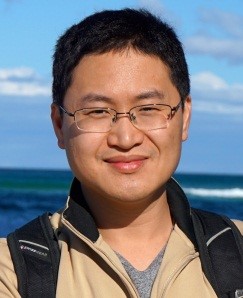
Jun Fang, University of Electronic Science and Technology of China, China
Jun Fang received the B.S. and M.S. degrees from the Xidian University, Xi’an, China in 1998 and 2001, respectively, and the Ph.D. degree from the National University of Singapore, Singapore, in 2006. During 2006, he was a postdoctoral research associate in the Department of Electrical and Computer Engineering, Duke University. From January 2007 to December 2010, he was a postdoctoral research associate with the Department of Electrical and Computer Engineering, Stevens Institute of Technology. Since 2011, he has been with the University of Electronic of Science and Technology of China, where he is currently a Professor. Dr. Fang has authored/co-authored more than 60 papers in IEEE journals. In 2013, he received the IEEE Vehicular Technology Soceity (VTS) Jack Neubauer Award for the best systems paper “Multi-antenna assisted spectrum sensing in cognitive radio” published in IEEE Trans. Vehicular Technology in May, 2010. He is currently an Associate Technical Editor for IEEE Communications Magazine, and an Associate Editor for IEEE Signal Processing Letters.
Title:
Analysis and Optimization of Caching in Large-scale Wireless Networks
Instructor:
Ying Cui, Shanghai Jiaotong University, China (cuiying@sjtu.edu.cn)
The rapid proliferation of smart mobile devices has triggered an unprecedented growth of global mobile data traffic. Modern data traffic exhibits a high degree of asynchronous content reuse. Thus, caching at base stations (BSs) is gradually recognized as a promising approach to support massive content delivery over wireless networks. It is of critical importance to fully exploit the potential of caching in wireless networks, by jointly utilizing other key wireless technologies. In this talk, I will discuss joint caching and multicasting in heavy or moderate load scenarios, and joint caching and BS cooperation in light load scenarios. This talk will present a general framework of analysis and optimization of average performance in large-scale cache-enabled wireless networks, which is based on stochastic geometry, probability theory and various optimization techniques. The analysis and optimization results provide valuable design insights for practical cache-enabled wireless networks.
Biography of the instructor:

Ying Cui, Shanghai Jiaotong University, China
Ying Cui received her B.E. degree in Electronic and Information Engineering from Xi’an Jiao Tong University, China, in 2007 and her Ph.D. degree in Electronic and Computer Engineering from the Hong Kong University of Science and Technology (HKUST), Hong Kong, in 2011. From January 2011 to July 2011, she was a Visiting Assistant in Research in the Department of Electrical Engineering at Yale University, US. From March 2012 to June 2012, she was a Visiting Scholar in the Department of Electronic Engineering at Macquarie University, Australia. From June 2012 to June 2013, she was a Postdoctoral Research Associate in the Department of Electrical and Computer Engineering at Northeastern University, US. From July 2013 to December 2014, she was a Postdoctoral Research Associate in the Department of Electrical Engineering and Computer Science at Massachusetts Institute of Technology (MIT), US. Since January 2015, she has been an Associate Professor in the Department of Electronic Engineering at Shanghai Jiao Tong University, China. Her current research interests include cache-enabled wireless networks, mobile edge computing, multimedia transmission, future Internet architecture, delay-sensitive cross-layer control and network coding. She was selected into China’s 1000Plan Program for Young Talents in 2013. She received the Best Paper Award at IEEE ICC, London, UK, June 2015.
Invited Session-5
Session Chair: Shunqing Zhang
Date: Tuesday, 24 October, 2017
Time: 14:00-15:30
Room: Wanxiang Hall (2F)-F meeting room
Title:
CMOS Millimeter-Wave Power Amplifier and Transmitter Design
Instructor:
Dixian Zhao, Southeast University, China (dixian.zhao@seu.edu.cn)
The rapid growth of mobile data and the use of smart phones are making unprecedented challenges for wireless service providers to overcome a global bandwidth shortage. Millimeter-wave (mm-Wave) technology is widely considered as one of the key technologies that will continue to serve the consumer demand for increased wireless data capacity. Meanwhile, the advanced CMOS can now well operate in mm-Wave bands, permitting the integration of a full transceiver in a low-cost, high-yield technology. However, the design of mm-Wave transceivers in advanced CMOS still poses many challenges at device, circuit and architecture levels. In addition to generic difficulties, such as high-frequency operation and low active gain, mm-Wave designers must deal with issues like low breakdown voltage, high interconnect loss, unwanted mutual coupling, poor device matching, inaccurate PDK high-frequency models, strict design rules, long EM-simulation time, etc. At transmitter side, all these critical issues limit the output power and efficiency, prolong the design time and make it difficult to guarantee the success of tape-out.
This talk will focus on realizing CMOS mm-Wave power amplifiers (PAs) towards more output power, higher efficiency and broader bandwidth. All the aforementioned design challenges will be described. Novel design techniques at mm-Wave will be presented, followed by prior-art PA and TX dsigns in advanced CMOS technologies.
Biography of the instructor:

Dixian Zhao, Southeast University, China
Dixian Zhao (M’15) received the B.Sc. degree in microelectronics from Fudan University, Shanghai, China, in 2006, the M.Sc. degree in microelectronics from Delft University of Technology (TU Delft), the Netherlands, in 2009, and the Ph.D. degree in electrical engineering at University of Leuven (KU Leuven), Belgium, in 2015.
From late 2005 to 2007, he was with Auto-ID Lab, Shanghai, China, where he developed the non-volatile memory for passive RFID tags. From 2008 to 2009, he was with Philips Research, Eindhoven, where he designed a 60-GHz beamforming transmitter for presence detection radar. From 2009 to 2010, he was a research assistant at TU Delft, working on the 94-GHz wideband receiver for imaging radar. From 2010 to 2015, he was a research associate at KU Leuven, where he developed several world-class 60-GHz and E-band transmitters and power amplifiers. Since April 2015, he has joined Southeast University, China, and he is now a Full Professor. His current research interests include RF and millimeter-wave integrated transceivers and power amplifiers for 5G MIMO, Satellite and Radar applications.
Prof. Zhao serves as a member of the Technical Program Committee (TPC) of several conferences, including the IEEE European Solid-State Circuits Conference (ESSCIRC) and IEEE International Wireless Symposium (IWS). He was the recipient of the 1000-Young-Talent Award in 2016, the Innovative and Entrepreneurial Talent of Jiangsu Province in 2016, the IEEE Solid-State Circuits Society Predoctoral Achievement Award in 2014, the Chinese Government Award for Outstanding Students Abroad in 2013, the Top-Talent Scholarship from TU Delft in 2007 and 2008, and the Samsung Fellowship from Fudan University in 2005. He has authored and co-authored more than 30 IEEE journal and conference papers (including 2 ISSCC, 3 JSSC and 4 T-MTT), one book (60-GHz and E-band Power Amplifiers and Transmitters, Springer Press, 2015), one book chapter (chapter 8, mm-Wave Silicon Power Amplifiers and Transmitters, Cambridge University Press, 2016), and has 3 US patents issued.
Title:
Attacks and Defenses of IoT Systems via A Cross-layer Approach
Instructor:
Haojin Zhu, Shanghai Jiaotong University, China (zhuhaojin@gmail.com)
Along with the high popularity of IoT systems, the security and privacy issues in IoT are receiving an increasing interest. In this study, we present WindTalker, a novel and practical keystroke inference framework that allows an attacker to infer the sensitive keystrokes on a mobile device through WiFi-based side-channel information. WindTalker is motivated from the observation that keystrokes on mobile devices will lead to different hand coverage and the finger motions, which will introduce a unique interference to the multi-path signals and can be reflected by the channel state information (CSI). The adversary can exploit the strong correlation between the CSI fluctuation and the keystrokes to infer the user’s number input. WindTalker presents a novel approach to collect the target’s CSI data by deploying a public WiFi hotspot. Compared with the previous keystroke inference approach, WindTalker neither deploys external devices close to the target device nor compromises the target device. Instead, it utilizes the public WiFi to collect user’s CSI data, which is easy-to-deploy and difficult-to-detect. In addition, it jointly analyzes the traffic and the CSI to launch the keystroke inference only for the sensitive period where password entering occurs. WindTalker can be launched without the requirement of visually seeing the smart phone user’s input process, backside motion, or installing any malware on the tablet. We implemented Windtalker on several mobile phones and performed a detailed case study to evaluate the practicality of the password inference towards Alipay, the largest mobile payment platform in the world. The evaluation results show that the attacker can recover the key with a high successful rate. Our research shows that it needs to jointly consider multiple-layer information (e.g., physical layer, network layer and system layer) to design a secure NCS. It also provides more research opportunities for network security study in a cross-layer fashion.
Biography of the instructor:
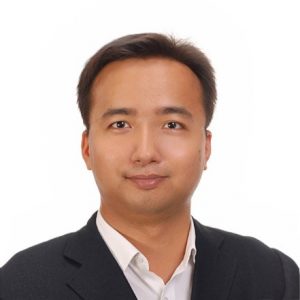
Haojin Zhu, Shanghai Jiaotong University, China
Haojin Zhu (IEEE M’09-SM’16) received his B.Sc. degree (2002) from Wuhan University (China), his M.Sc.(2005) degree from Shanghai Jiao Tong University (China), both in computer science and the Ph.D. in Electrical and Computer Engineering from the University of Waterloo (Canada), in 2009. Since 2017, he has been a full professor with Computer Science department in Shanghai Jiao Tong University. His current research interests include wireless network security and privacy enhancing technologies. He published 35 international journal papers, including JSAC, TDSC, TPDS, TMC, TWC, TVT, and 60 international conference papers, including ACM CCS, ACM MOBICOM, ACM MOBIHOC, IEEE INFOCOM, IEEE ICDCS. He received a number of awards including: IEEE ComSoc Asia-Pacific Outstanding Young Researcher Award (2014), Top 100 Most Cited Chinese Papers Published in International Journals (2014), Supervisor of Shanghai Excellent Master Thesis Award (2014), Distinguished Member of the IEEE INFOCOM Technical Program Committee (2015), Outstanding Youth Post Expert Award for Shanghai Jiao Tong University (2014), SMC Young Research Award of Shanghai Jiao Tong University (2011). He was a co-recipient of best paper awards of IEEE ICC (2007) and Chinacom (2008) as well as IEEE GLOBECOM Best Paper Nomination (2014) and WASA Best Paper Runner-Up Award (2017). He received Young Scholar Award of Changjiang Scholar Program by Ministry of Education of P.R. China in 2016.
Title:
A New Way of Wireless Power Transfer beyond 5G
Instructor:
Qingwen Liu, Tongji University, China (qingwen.liu@gmail.com)
About 70 years ago, Abraham Maslow, created a hierarchy of innate and psychological needs: psychological, safety, belonging/love, esteem and self-actualization. In this era of digital evolution, those needs have been usurped by the continuous digital cravings that are more important than the most basic needs – WiFi/mobile-internet and battery-life. Beyond 5G, in addition to wireless information transfer (WIT), wireless power transfer (WPT) becomes a promising solution to provide convenient and perpetual battery-life. Besides the traditional WPT technologies such as inductive coupling, magnetic resonate coupling and electromagnetic radiation, distributed laser charging (DLC), a new WPT alternative, can provide Watt-level power over meter-level distance for smartphones, laptops, etc.. DLC is a long-range high-power WPT technology and can provide the similar user experience as WiFi communications. We will present DLC’s technical fundamentals and illustrate its potential of cutting the last cord for mobile electronics.
Biography of the instructor:

Qingwen Liu, Tongji University, China
Qingwen Liu received his BE degree in Electrical Engineering and Information Science from University of Science and Technology of China (USTC), Hefei, China, the MS and PhD degrees in Electrical Engineering from University of Minnesota – Twin Cities. From 2016, he joined in the College of Electronics and Information Engineering, Tongji University, Shanghai, China. His research interests are in the areas of wireless networking and wireless power transfer. He is a senior member of IEEE.
Invited Session-6
Session Chair: Dixian Zhao
Date: Tuesday, 24 October, 2017
Time: 16:00-17:30
Room: Wanxiang Hall (2F)-F meeting room
Title:
Green 5G: From the Fundamental Tradeoffs’ Perspective
Instructor:
Shunqing Zhang, Shanghai University, China (shunqing@shu.edu.cn)
With years of tremendous traffic and energy consumption growth, green radio has been valued not only for theoretical research interests but also for the operational expenditure reduction and the sustainable development of wireless communications. In this talk, we will focus on research progresses of 4G and 5G communications, such as orthogonal frequency division multiplexing and non-orthogonal aggregation, MIMO systems, and heterogeneous networks. We will also discuss potential challenges and impacts of fundamental green tradeoffs, to guide the energy efficient research and design for future wireless networks.
Biography of the instructor:

Shunqing Zhang, Shanghai University, China
Shunqing Zhang received the B.S. degree from the Department of Microelectronics, Fudan University, Shanghai, China, in 2005, and the Ph.D. degree from the Department of Electrical and Computer Engineering, Hong Kong University of Science and Technology, Hong Kong, in 2009.
He was with the Communication Technologies Laboratory, Huawei Technologies, as a Research Engineer and then a Senior Research Engineer from 2009 to 2014, and a Senior Research Scientist of Intel Collaborative Research Institute on Mobile Networking and Computing, Intel Labs from 2015 to 2017. Since 2017, he has been with the School of Communication and Information Engineering, Shanghai University, Shanghai, China, as a Full Professor. His current research interests include energy efficient 5G/5G+ communication networks, hybrid computing platform, and joint radio frequency and baseband design. He has published over 60 peer-reviewed journal and conference papers, as well as over 50 granted patents. He is a senior member of IEEE and won the paper award for Advances in Communications from IEEE Communications Society in 2017.
Title:
Computing at the Edge for 5G and IoT
Instructor:
Jemin Lee, Daegu Gyeongbuk Institute of Science & Technology (DGIST)Daegu, Korea (jmnlee@dgist.ac.kr)
A key trend in computing and networking is pushing processing and storage into the “cloud”. However, the cloud computing paradigm is facing difficulties in supporting the delay-sensitive applications and improving the scalability for exploding connected devices. Moreover, most IoT devices are small and designed to operate with minimal resources, and these resource-constrained devices have little or no capability to defend themselves against sophisticated security attacks. Those challenges lead to the new paradigm “edge computing” which makes the cloud descend to the edge. This emphasizes leveraging the power of local computing and using different types of edge devices to provide better services. In this talk, we will explore the use of edge computing for 5G and IoT. Specifically, we will provide the efficient design of edge computing-enabled heterogeneous networks and the framework of leveraging edge computing for IoT security.
Biography of the instructor:

Jemin Lee, Daegu Gyeongbuk Institute of Science & Technology (DGIST)Daegu, Korea
Jemin Lee received the B.S. (with high honors), M.S., and Ph.D. degrees in Electrical and Electronic Engineering from Yonsei University, Seoul, Korea, in 2004, 2007, and 2010, respectively. She was a Postdoctoral Fellow at the Massachusetts Institute of Technology (MIT), Cambridge, MA from 2010 to 2013 and a Temasek Research Fellow at iTrust, Centre for Research in Cyber Security, Singapore University of Technology and Design (SUTD), Singapore from 2014 to 2016. She is currently an Assistant Professor at the department of Information and Communication Engineering, Daegu Gyeongbuk Institute of Science and Technology (DGIST), Daegu, Korea. Her current research interests include ultra-dense networks, mobile edge computing, physical layer security, and wireless security. She is currently an Editor for the IEEE Transactions on Wireless Communications and the IEEE Communications Letters and also serving as a Secretary for IEEE ComSoc Radio Communications Technical Committee. She received the IEEE ComSoc Asia-Pacific Outstanding Young Researcher Award in 2014, the Temasek Research Fellowship in 2013, the Chun-Gang Outstanding Research Award in 2011, and the IEEE WCSP Best Paper Award in 2014.


